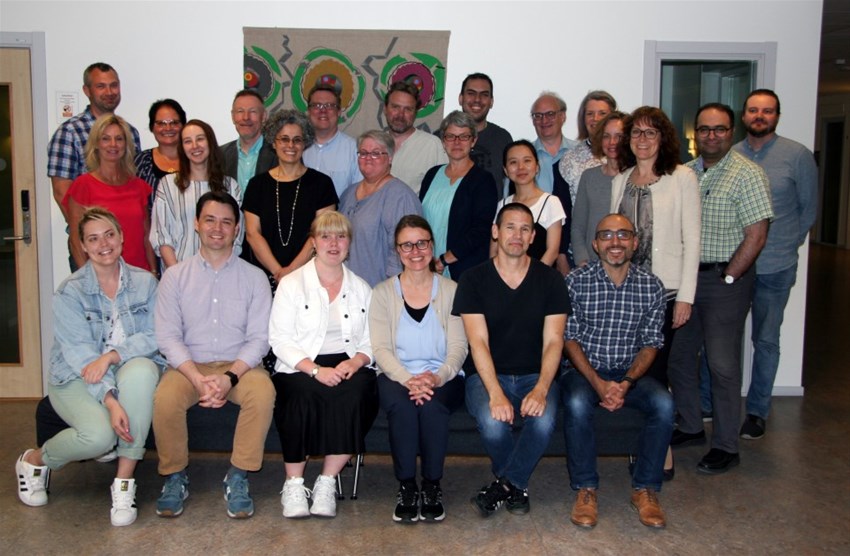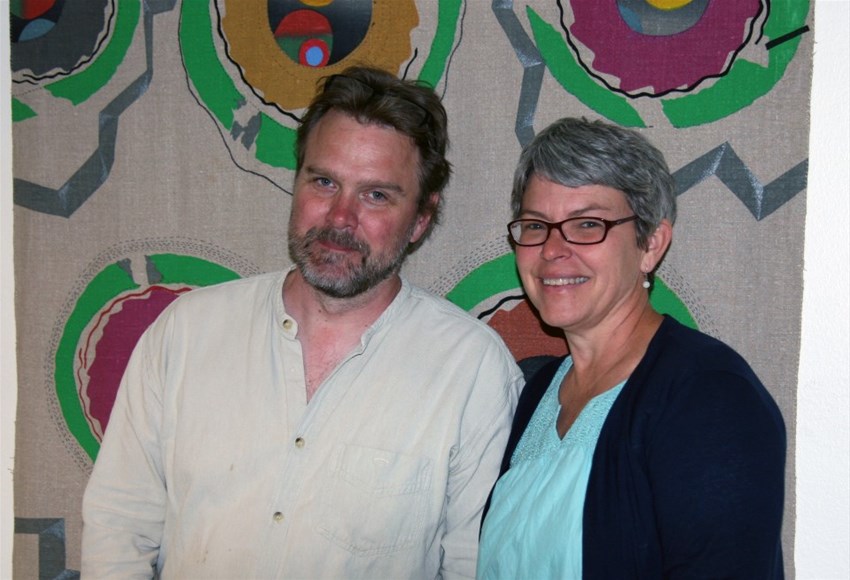Participants "starstruck" in a new course at University West
02 Jul 2019
I meet Jill Bratton shortly before the afternoon session on the summer school at University West will start, a day at the end of June. She is a postgraduate student at the University of New Mexico in the United States. She is here in Trollhättan to participate in the course Activity Theory in Practice.
- It is of course the subject that attracts me but also the totally incredible set of course leaders* who are here. Imagine that I get to discuss and meet these researchers as I read so many theories of. I am actually a bit "starstruck", says Jill Bratton.

Participants and lecturers gathered at campus in Trollhättan.
Jill Bratton is at the very beginning of her postgraduate education and received recommendations from a research colleague from another university in the United States about applying for the course Activity Theory in practice 7, 5 credits at the University West. Her research topic is linked to the school - Language literacy and sociocultural studies - and she already sees that she can use what she learns here in her future research.
Research method
Activity theory is a research method in which you study tensions, conflicts or changes around a particular "object". The object can vary completely and the theory can therefore be applied in many different subjects such as economics, informatics, pedagogy or industrial work-integrated learning. The five lecturers on the course have all developed different parts of activity theory and its models. They share their theoretical knowledge, but throughout the course the participants - master students and postgraduate students - also try to apply the theories.
- Activity theory itself becomes a type of collaborative research, often with the participation of different societal actors. Here the participants get to think about how they can design and implement this research design for their own. So they have to apply and test the theory, says Kristina Johansson, course coordinator.
"In practice" - very important
Kristina Johansson is an associate professor in education with a focus on work-integrated learning at University West and active in the university's research environment Learning in for the new working life, LINA. Within LINA, the focus in research is closely linked to the university's profile on work-integrated learning and co-production of knowledge. She has worked out the course content together with the five lecturers and it was important that in addition to the theoretical base also add the application part - "in practice".
- Activity theory itself focuses on changes in the institutions and when studying these, you approach work-integrated itself. So now we have created a course that builds on the university's view of WIL and on the research conducted within LINA. Because it is course participants from all over the world, we now have the opportunity to create an international network around WIL, says Kristina Johansson.
Rock star status
Kristina tells us that the university now have the two leading researchers in activity theory - Annalisa Sannino and Yrjö Engeström - as guest professors who are highly involved in the course design and also two of those who create a “rock star status” to the course. Despite the high level of the five lecturers, both Jill Bratton and the course colleague Dennis Augustsson speak about the open atmosphere and the informal touch that the course has. Dennis is a post graduate student in education with a focus on work-integrated learning at University West.
- You can really feel the energy in the room - both from the lecturers and the participants - and the lecturers welcome initiatives from us. The discussions are extremely valuable and no one is superior to the other. This will be an extremely good network in the future, says Dennis Augustsson, who opposite Jill is on his last year of his postgraduate education and focus on the teaching profession and how the introduction of digital technology affects the role of the teacher.

Dennis Augustsson and Jill Bratton appreciate the lecturers and international perspectives.
Dennis already sees activity theory as a tool in his future research. Both Jill and Dennis also value the mix of the approximately 20 participants that origins from so different parts of the world. This means that different perspectives are added all the time. Something that Kristina Johansson agrees with:
- The course becomes an international recruitment base for the activity theory. There are actually plans for a new course next year. Then it is given in Leeds, by David Allen, one of the lecturers.
* Lecturers in Activity theory in practice 7.5 credits
- Annalisa Sannino, Tampere University
- Yrjö Engeström, University of Helsinki
- Clay Spinuzzi, University of Texas at Austin
- David Allen, Leeds University
- Stan Karanasios, RMIT University
Contact:
Kristina Johansson, University West, course coordinator, kristina.johansson@hv.se
Text and photo: Anna Hallberg


